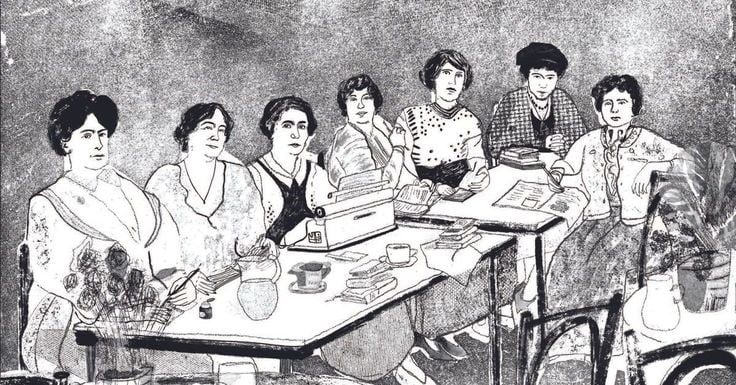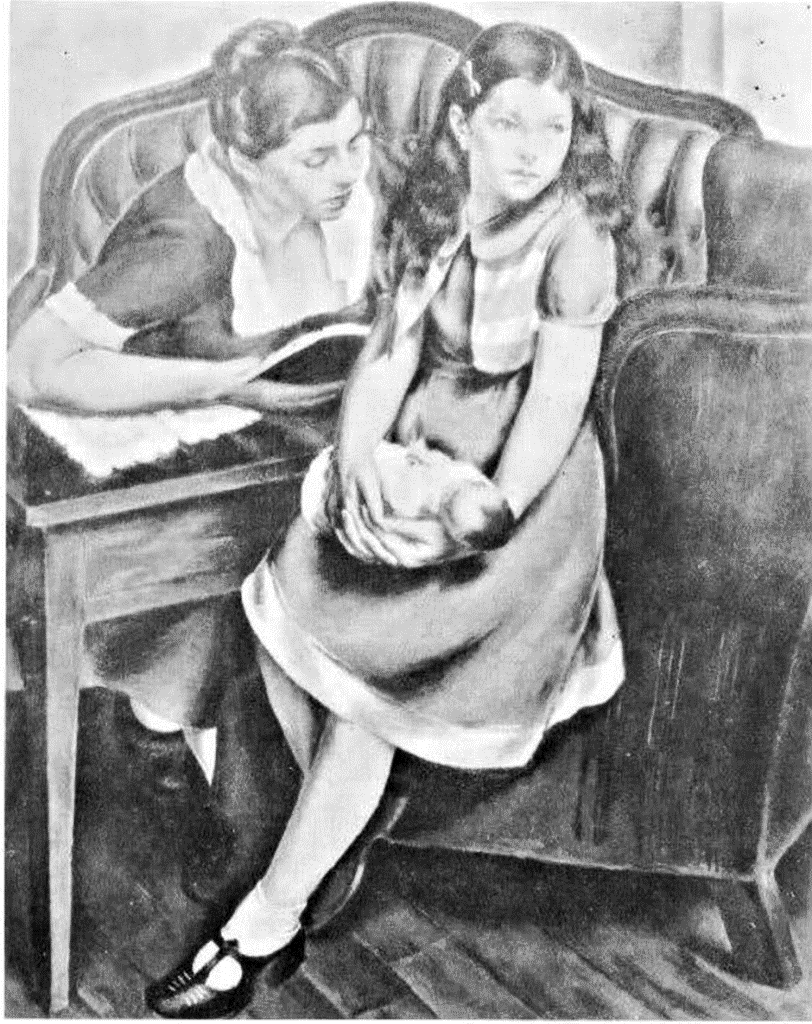Understanding the nuances of psychological assessments like Thematic Apperception Test (TAT) and Picture Perception and Description Test (PPDT) is essential for both practitioners and candidates preparing for defense services.
This article aims to Decoding Women-Based TAT Images, providing insights that can help candidates express their thoughts and feelings effectively during these assessments. Through a structured approach, we will explore various components that contribute to decoding women-based TAT images, enhancing both understanding and performance.
The Thematic Apperception Test (TAT) is a projective psychological test that involves showing individuals a series of ambiguous images and asking them to create stories based on what they perceive. The primary objective is to uncover underlying thoughts, emotions, and desires that may not be readily accessible through direct questioning.
Also Read | 7 Must-Know Tips for SSB interview Conference Day
Purpose of TAT in Psychological Assessments
The TAT serves multiple purposes in psychological assessments:
- Revealing Unconscious Thoughts: It allows individuals to project their inner thoughts and feelings onto the images, providing insights into their personality.
- Understanding Relationships: The narratives created can reveal how individuals perceive relationships and social interactions.
- Coping Mechanisms: It highlights how individuals cope with stress and challenges, offering a glimpse into their problem-solving abilities.
Methodology of TAT
In TAT, individuals are typically shown a series of 20 images, with a focus on those that resonate most with them. The process involves:
- Image Presentation: Candidates are shown a series of images, often depicting ambiguous scenes.
- Story Creation: They are asked to create a story around the image, describing what led to the scene, what is happening, and what might happen next.
- Analysis: Trained psychologists analyze the stories for themes, emotional content, and relational dynamics.
The Role of Women in TAT Images
Women-oriented TAT images often depict scenarios that resonate with female experiences, challenges, and aspirations. Understanding these images is crucial for women candidates as it helps them express their narratives authentically.
Common Themes in Women-Based TAT Images
Women-oriented TAT images often encompass various themes, including:
- Empowerment and Independence: Many images depict women in roles that emphasize strength and independence, encouraging candidates to reflect on their own empowerment.
- Relationships and Family Dynamics: These images frequently explore familial and social relationships, allowing candidates to express their views on interpersonal dynamics.
- Challenges and Resilience: Scenarios illustrating challenges faced by women can prompt candidates to narrate stories of resilience and coping.
Importance of Relating Personal Experiences
When responding to women-oriented TAT images, candidates should strive to connect the depicted scenarios with their own life experiences. This personal connection can enhance the authenticity of their narratives, making them more relatable and impactful.
Strategies for Interpreting Women-Based TAT Images
Interpreting women-based TAT images requires a thoughtful approach. Here are some strategies to help candidates articulate their narratives effectively.
1. Observational Skills
Pay close attention to the details in the image. Note the emotions expressed by the characters, the setting, and any objects that may hold significance. This observational skill will help in crafting a more nuanced story.
2. Emotional Resonance
Identify the emotions that the image evokes. Does it remind you of a personal experience? Understanding your emotional response can guide the direction of your narrative.
3. Constructing a Narrative
When formulating a story, consider the following structure:
- Beginning: Set the scene and introduce the characters.
- Middle: Describe the conflict or challenge faced by the characters.
- End: Conclude with a resolution or reflection on the experience.
4. Authenticity
Authenticity is key. Share your genuine thoughts and feelings, even if they diverge from conventional expectations. This authenticity will resonate more deeply with evaluators.
Women-Oriented PPDT: An Overview
The Picture Perception and Description Test (PPDT) is another projective test similar to the TAT but focuses specifically on images that prompt candidates to describe a scene involving multiple characters. This test is often used in defense services selection processes.
Significance of PPDT in Defense Services
PPDT plays a critical role in assessing candidates’ personality traits and decision-making abilities under pressure. The test evaluates:
- Leadership Qualities: How candidates perceive leadership roles within the depicted scenarios.
- Team Dynamics: Understanding how candidates interpret interactions among characters can reveal their views on teamwork.
- Problem-Solving Skills: The ability to navigate challenges in the narrative showcases a candidate’s critical thinking.
Also Read | Answering ‘Why Join the Indian Army?’ in Your SSB Interview
Common Themes in Women-Oriented PPDT Images
Women-oriented PPDT images often revolve around themes that resonate with female experiences and societal roles. Recognizing these themes can help candidates align their narratives with the expectations of evaluators.
1. Empowerment and Leadership
Many PPDT images depict women in leadership roles, encouraging candidates to explore themes of empowerment and decision-making. Candidates should reflect on their understanding of leadership and how they can embody these qualities in their narratives.
2. Social Responsibility
Images that illustrate social issues or community involvement prompt candidates to consider their roles in society. Narratives can focus on the importance of social responsibility and the impact of individual actions on the community.
3. Family and Relationships
PPDT images often highlight familial relationships, allowing candidates to explore their views on family dynamics. Candidates can narrate stories that reflect their values regarding family, support, and love.
Crafting Effective Narratives for Women-Oriented TAT and PPDT
Creating compelling narratives for women-oriented TAT and PPDT images requires practice and self-reflection. Here are some tips to help candidates enhance their storytelling abilities.
1. Practice Regularly
Regular practice with TAT and PPDT images can improve storytelling skills. Candidates should engage with a variety of images and practice creating narratives that reflect different themes and emotions.
2. Seek Feedback
Sharing narratives with peers or mentors can provide valuable feedback. Constructive criticism can help candidates refine their storytelling techniques and identify areas for improvement.
3. Reflect on Personal Experiences
Connecting narratives to personal experiences can enhance authenticity. Candidates should reflect on their life stories and consider how they can weave these experiences into their TAT and PPDT responses.
4. Embrace Vulnerability
Sharing personal stories can feel vulnerable, but it can also create a deeper connection with evaluators. Candidates should embrace vulnerability as a strength, allowing their true selves to shine through.
Common Mistakes to Avoid in TAT and PPDT Responses
While crafting narratives, candidates should be aware of common pitfalls that can hinder their performance. Avoiding these mistakes can enhance the effectiveness of their responses.
1. Lack of Depth
Simply narrating the events without delving into emotions and motivations can result in a shallow story. Candidates should aim for depth by exploring the characters’ feelings and thoughts.
2. Overly Complex Narratives
While creativity is valuable, overly complex narratives can confuse evaluators. Candidates should strive for clarity and coherence in their storytelling.
3. Neglecting Personal Connection
Failing to connect the narrative to personal experiences can lead to a lack of authenticity. Candidates should aim to weave their own stories into the narratives they create.
4. Ignoring the Image
Candidates should ensure that their narratives are closely tied to the image presented. Straying too far from the image can result in disconnection and confusion.
Also Read | What Is SSB Services Selection Board
Conclusion
Decoding women-based TAT and PPDT images involves a blend of observation, emotional resonance, and authentic storytelling. By understanding the themes prevalent in these images and employing effective narrative strategies, candidates can enhance their performance in psychological assessments. Embracing personal experiences, seeking feedback, and practicing regularly will empower candidates to express their thoughts and feelings authentically. Ultimately, the journey of decoding these images is not just about passing a test; it is about self-discovery and personal growth.
FAQs
Q1: How can I practice for the TAT and PPDT?
Regularly engage with various TAT and PPDT images, create narratives, and seek feedback from peers or mentors.
Q2: What should I focus on when interpreting women-oriented TAT images?
Pay attention to emotions, relationships, and personal connections to the scenarios depicted in the images.
Q3: How can I ensure my narratives are authentic?
Connect your narratives to personal experiences and embrace vulnerability in your storytelling.
Q4: What are common themes in women-oriented TAT images?
Common themes include empowerment, family dynamics, and resilience in the face of challenges.





















